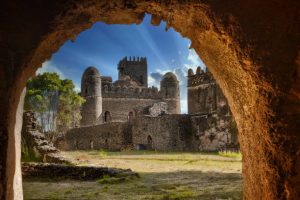The sand dunes of Namibia and Angola
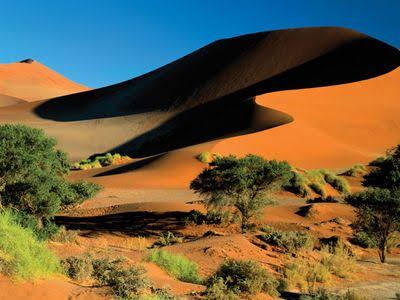
The sand dunes of Namibia and Angola are some of the most dramatic and iconic landscapes in the world. Here are some key details about these incredible dunes:
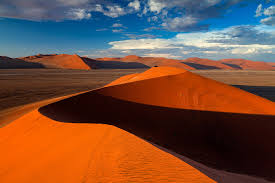
Namibia:
1. Sossusvlei:
Located in Namib-Naukluft National Park in southern Namibia, Sossusvlei is home to some of the tallest dunes in the world, reaching up to 1,000 feet (300 meters) high.
The dunes are known for their deep red-orange color, which is a result of high iron oxide content in the sand. The color deepens as the dunes age.
The most famous dune in Sossusvlei is Dune 45, which is one of the most photographed. The sunrise and sunset light makes it a magical sight.
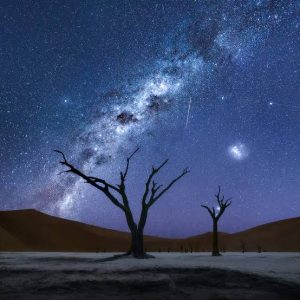
Dead Vlei, a white clay pan surrounded by high dunes, features ancient, dried-out acacia trees, some more than 900 years old. It’s an incredibly eerie and beautiful sight.
2. Dune 45:
As mentioned, this is one of the most popular dunes for tourists, and it’s not only famous for its beauty but also because it’s relatively accessible.
The dune is about 170 meters (558 feet) high and is often climbed by visitors to get a panoramic view of the surrounding desert.
3. Namib Desert:
The Namib Desert, where these dunes are found, is considered the oldest desert in the world, estimated to be around 55 million years old.
The desert spans both Namibia and parts of Angola, with dunes reaching incredible heights in various places.
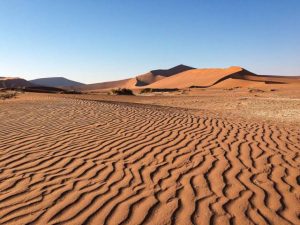
ANGOLA:
1. Benguela Dunes:
Located along Angola’s Atlantic coast, these dunes are part of the same desert system as Namibia’s, though they are less developed for tourism.
The dunes here are not as well-known but still feature the same striking red sands and dramatic landscapes.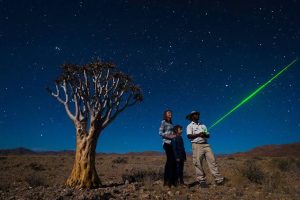
The Namib Desert extends into Angola, where the Benguela Dunes form a beautiful stretch along the Angolan coast.
2. Sand Dunes of Tômbwa:
Near the town of Tômbwa in southern Angola, this region is home to large, undisturbed sand dunes that rise dramatically out of the desert landscape.
These dunes are part of the Namib Desert’s northernmost extension and offer a less touristy, more untouched environment.
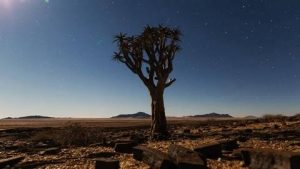
Key Features Of The Dunes:
Climate: The environment is incredibly dry, with very little rainfall (sometimes only a few millimeters a year), making it a true desert landscape.
Flora and Fauna: Despite the extreme conditions, the dunes support some unique wildlife, such as meerkats, oryx, jackals, and a variety of bird species. The plant life is often sparse but includes resilient species like the Welwitschia plant, which can live for centuries in this harsh environment.
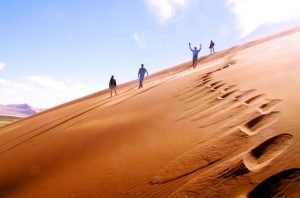
Sand Movement: The dunes are constantly shifting with the wind, meaning the landscape changes continuously, making each visit unique.
Visiting the Dunes:
Best Time to Visit: Early mornings or late afternoons are the best times to visit, as the temperatures are cooler, and the light creates dramatic shadows that enhance the beauty of the dunes.
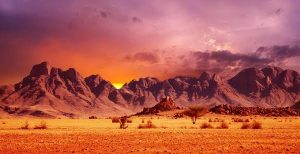
Access: While the Sossusvlei dunes are well-developed for tourism with guided tours, accommodations, and even special sunrise excursions, the dunes in Angola are more remote and less accessible due to the lack of infrastructure. However, the beauty and solitude they offer can be worth the extra effort.
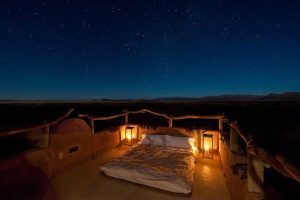
Activities: You can climb the dunes, take scenic flights over them, explore Dead Vlei, and for the more adventurous, even try sandboarding down the dunes!


